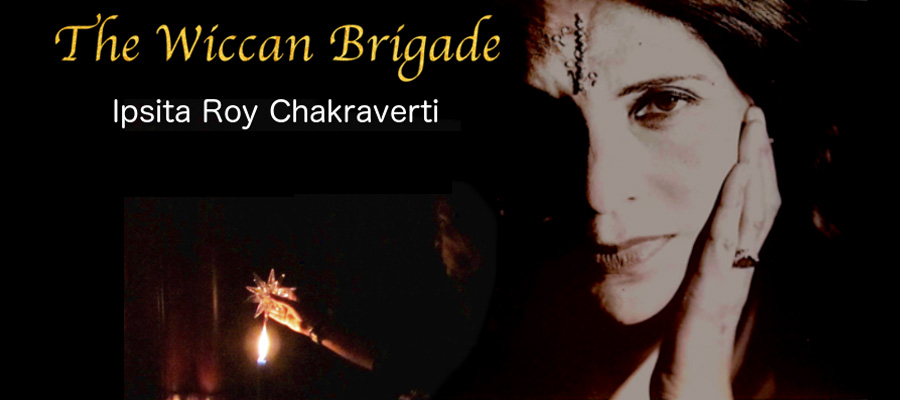


Also known as: Narunte, Narunde,Naruddi
Hailed as: “Sister of the Sebittu”
Pray to her for: Victory, triumph after long battle, material success, care for women
Invoke her with: A stone chalice and a palm frond. If you wish, you can put a bit of wine into the chalice and pour it out onto clean earth the next day.

( Hand crafted by Deepta. Inspired by the statue at the Louvre, Paris.)
The cult of Narundi has been documented over a long period of time in history and has been invoked in attesting oaths and treaties between rulers, in curses and warnings and in seeking success and well-being.
A statue which has been found by archaeologists show the goddess seated on a throne, holding a chalice in one hand and a palm frond in another. She is surrounded by lions on her sides and behind her throne. Her feet rest on lions before her throne as well. The lions behind her are armed with spears, defending her and warding off the enemy.
Lions were always associated with power, as companions to divinity, and as guardians of the sacred portals. They were also symbols of strength and victory in warfare.
Narundi was also known as a goddess who specially looked after women. Female names from the time show their devotion to this great mother goddess- for example, Narundi-Ummi, meaning ‘Narundi is my mother’. They would turn to her, as they would, to a mother, for protection, for healing and for easing their suffering. She would also be appealed to in difficult childbirths.
Narundi has in later times been called sister of the seven great gods of the Mesopotamians, or wife of the Igigi, the group of ‘great gods’ of heaven. In Babylonian periods, this was a group of ten, while in the Epic of Creation there are said to be three hundred Igigu. Narundi has often been called “Sister of the Sebittu”, or seven benevolent demons whose powers could be invoked against evil.
References
1. Mercer, Samuel A.B. "The Malediction in Cuneiform Inscriptions." Journal of the American Oriental Society 34 (1915)
2. Dhwty. “Nammu: A Forgotten Tale of the Sumerian Mother of Gods.”. Ancient Origins: Reconstructing the story of Humanity’s Past,
3. Hallo, William W. The Book of the People. Providence RI 02912: Brown Judaic Studies, Brown University. 2020.
4. Black, Jeremy. Gods, Demons and Symbols of Ancient Mesopotamia: An Illustrated Dictionary. 2014
6. Price, Ira M. “The Oath in Court Procedures in Early Babylonia and the Old Testament”. Journal of the American Oriental Society 49(1929)
7. Bock, Barbara. The Healing Goddess Gula: Towards an Understanding of Healing Babylonian Medicine. 2014
8. Alvarez-Mon, Javier. The Art of Elam: Routledge
9. Wiseman, D.J. “The Goddess Lama at Ur”. Iraq 22(1-2), ‘Ur in Retrospect: In memory of Sir C. Leonard Woolley’ pp 166-171. 1960
10. De Shong Meador, Betty. “Enheduanna: The First Known Author”. American Translators Association Publication. June 27,2017.
11. Ornan, Talley. “The triumph of the symbol: Pictorial representation of deities in Mesopotamia and the biblical image ban”. University of Zurich, 2005.
12. Koch, Heidemarie. “Theology and Worship in Achaemenid Iran”. Religion and Science, 1995
13. Ford, Michael. Maskim Hul: Babylonian Magick. 2010.
14. Jordan, Michael. Dictionary of Gods and Goddesses. New York: 1993,2004
15. Folz, Richard. Iran in World History. United States of America, 2016
16. Mark, Joshua. “The Myth of Etana”. Ancient History Encyclopedia.
17. Abusch, Tzvi and Karel Van der Toorn. Mesopotamian Magic: Textual, Historical and Interpretative Perspectives.
18. Hurwitz, Siegmund, Lilith, the first Eve: Historical and Psychological Aspects of the Dark Feminine.
19. Koch-Westenholz, Ulla. Mesopotamian Astrology: An Introduction to Babylonian and Assyrian Celestial Division. University of Copenhagen
20. Sjoberg, Ake W. “Hymn to Inanna and Her Self Praise”, Journal of Cuneiform Studies, Volume 40 Number 2.
21. Guterbock, Hans Gustav. “An Addition to the Prayer of Muršili to the Sungoddess and Its Implications”. Anatolian Studies, Volume 30, 1980.
22. Sassmannshausen, Leonard ed. He has Opened Nisaba’s House of Learning:
23. Norrie, Philip. History of Disease in Ancient Times: More Lethal Than War, 2018.
24. Mullo-Weir, C.J. Rev. “Four Hymns to Gula”, Journal of the Royal Asiatic Society, Part 1 – January, 1929
25. Blasweiler, Joost. “The Kalehisar Mountain and the deities of Arinna, the city of the Sun Goddess” Academia.Edu,
26. Scurlock, JoAnn, and Burton R. Andersen. Diagnoses in Assyrian and Babylonian Medicine: Ancient Sources, Translations, and Modern Medical Analyses. University of Illinois
27. Langdon, Stephen Herbert. Sumerian Liturgies and Psalms. United States of America: Library of Alexandria, 1919
28. Gabolde, Marc Dr. “The End of the Amarna Period”, BBC History, February 17, 2011,
29. Houwink, H.J. Ph. “Hittite Royal Prayers”, Brill Online Publication, Volume 16, Issue 1, 1st January, 1969
30. “Ancient Mesopotamian Gods and Goddesses”, Oracc and UK Higher Education Academy,
31. Dassow, Eva Von, Dr. “Contagion and Recovery in the Ancient Hittite Empire”,
32. Mark, Joshua J. “Ancient History Encyclopedia”, Ancient History Encyclopedia.